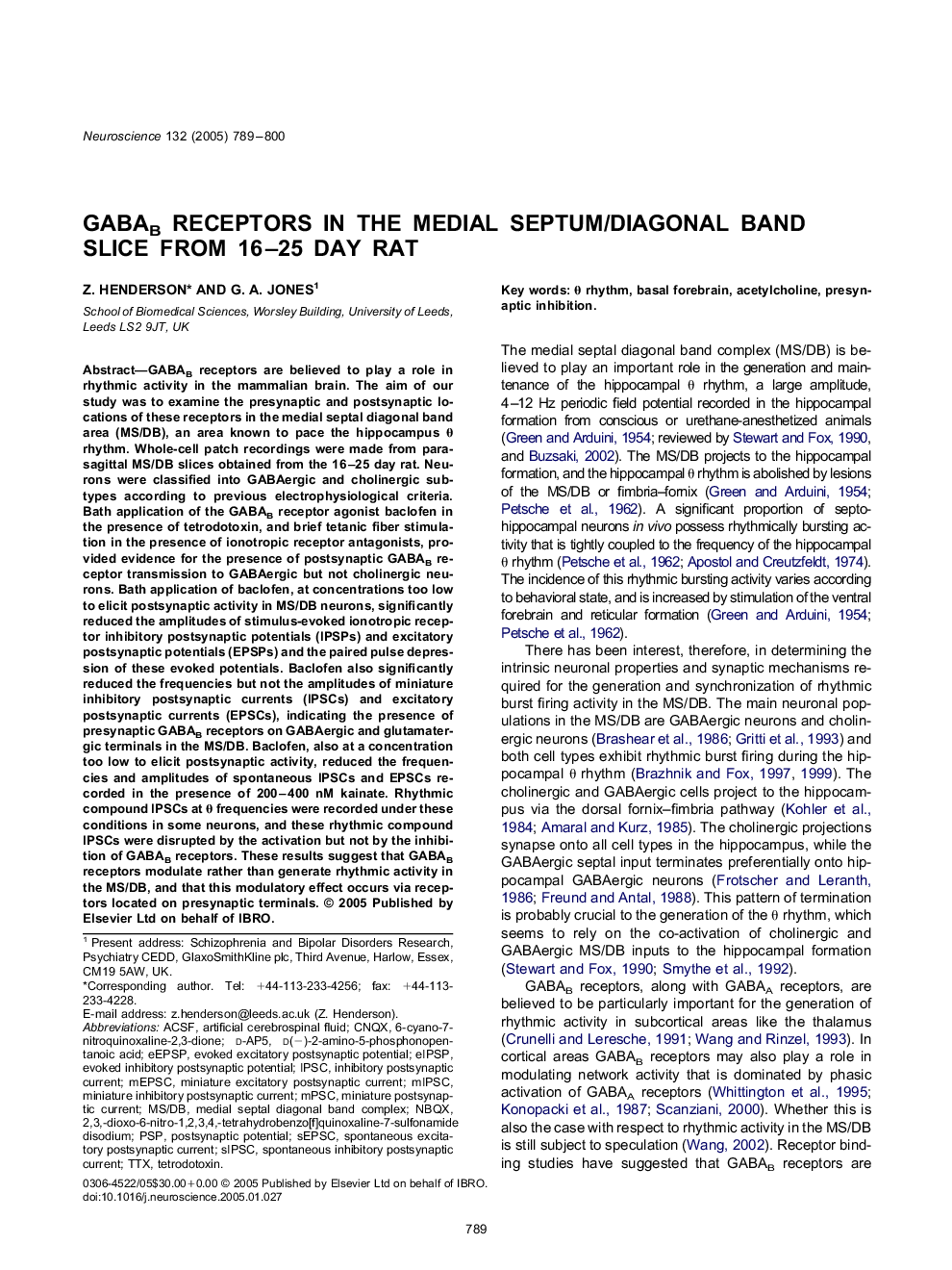| Article ID | Journal | Published Year | Pages | File Type |
|---|---|---|---|---|
| 9426733 | Neuroscience | 2005 | 12 Pages |
Abstract
GABAB receptors are believed to play a role in rhythmic activity in the mammalian brain. The aim of our study was to examine the presynaptic and postsynaptic locations of these receptors in the medial septal diagonal band area (MS/DB), an area known to pace the hippocampus θ rhythm. Whole-cell patch recordings were made from parasagittal MS/DB slices obtained from the 16-25 day rat. Neurons were classified into GABAergic and cholinergic subtypes according to previous electrophysiological criteria. Bath application of the GABAB receptor agonist baclofen in the presence of tetrodotoxin, and brief tetanic fiber stimulation in the presence of ionotropic receptor antagonists, provided evidence for the presence of postsynaptic GABAB receptor transmission to GABAergic but not cholinergic neurons. Bath application of baclofen, at concentrations too low to elicit postsynaptic activity in MS/DB neurons, significantly reduced the amplitudes of stimulus-evoked ionotropic receptor inhibitory postsynaptic potentials (IPSPs) and excitatory postsynaptic potentials (EPSPs) and the paired pulse depression of these evoked potentials. Baclofen also significantly reduced the frequencies but not the amplitudes of miniature inhibitory postsynaptic currents (IPSCs) and excitatory postsynaptic currents (EPSCs), indicating the presence of presynaptic GABAB receptors on GABAergic and glutamatergic terminals in the MS/DB. Baclofen, also at a concentration too low to elicit postsynaptic activity, reduced the frequencies and amplitudes of spontaneous IPSCs and EPSCs recorded in the presence of 200-400 nM kainate. Rhythmic compound IPSCs at θ frequencies were recorded under these conditions in some neurons, and these rhythmic compound IPSCs were disrupted by the activation but not by the inhibition of GABAB receptors. These results suggest that GABAB receptors modulate rather than generate rhythmic activity in the MS/DB, and that this modulatory effect occurs via receptors located on presynaptic terminals.
Keywords
PSPaCSFθ rhythmMS/DBTTXIPSCmIPSCmEPSCNBQXMPSCsEPSC6-Cyano-7-nitroquinoxaline-2,3-dioneD(−)-2-amino-5-phosphonopentanoic acidd-AP5sIPSCAcetylcholinetetrodotoxinspontaneous excitatory postsynaptic currentminiature inhibitory postsynaptic currentMiniature postsynaptic currentinhibitory postsynaptic currentSpontaneous inhibitory postsynaptic currentminiature excitatory postsynaptic currentCNQXartificial cerebrospinal fluidPresynaptic inhibitionpostsynaptic potentialbasal forebrain
Related Topics
Life Sciences
Neuroscience
Neuroscience (General)
Authors
Z. Henderson, G.A. Jones,
